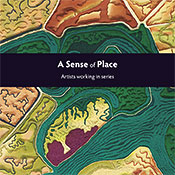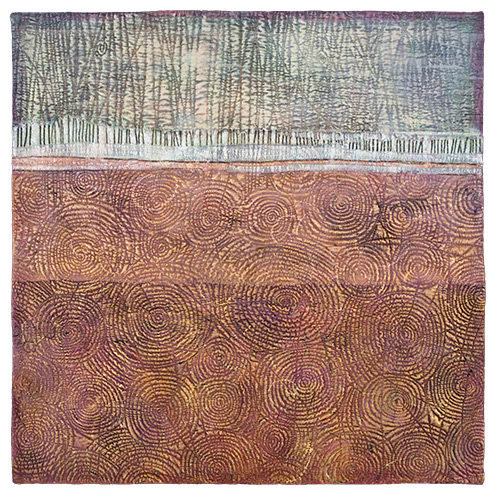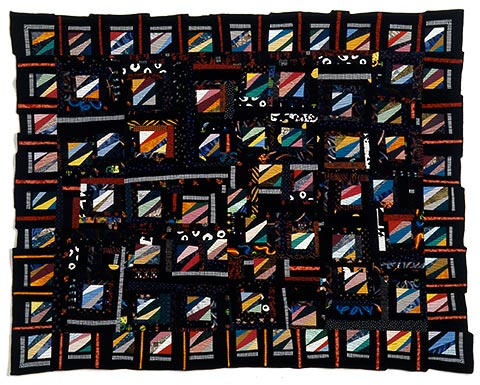Horizons series
Horizon VIII, 25 x 25 inches, ©2007
Horizon IX, 25 x 25 inches, ©2007
Horizon X, 25 x 25 inches, ©2007
The influence of the vast horizon line is something that’s buried deep within my psyche. A couple of times a year, I drive the 450-mile journey between Denver and Albuquerque, where my family lives. A lot of people think I’m crazy, but I just love doing this drive. There are some different routes you can take: You can either just get on I-25 and stick with it all the way, or you can head west at Walsenburg, Colo., and take the scenic route down through the San Luis valley and then through Taos and Santa Fe. Each has its advantages, but in either case the scenery is full of wide-open vistas and amazing skies, and is truly soul-restoring for me.
The Horizons series pieces are some of my favorites to do. I love working in squares, and I love the simplicity of dividing a square into just two major areas. The challenge is to make them restful but interesting.
 These 3 Horizons works were included in a SAQA-sponsored show last year called “A Sense of Place: Artists working in Series.” It was an invitational exhibit curated by Peg Keeney, one of SAQA’s very generous and tireless volunteers. The Sense of Place show is documented along with another show, “SAQA: Creative Force 2007,” in a beautifully-printed catalog available directly from SAQA.
These 3 Horizons works were included in a SAQA-sponsored show last year called “A Sense of Place: Artists working in Series.” It was an invitational exhibit curated by Peg Keeney, one of SAQA’s very generous and tireless volunteers. The Sense of Place show is documented along with another show, “SAQA: Creative Force 2007,” in a beautifully-printed catalog available directly from SAQA.
One side note – I was thrilled to learn that all three of these pieces sold from the show!




